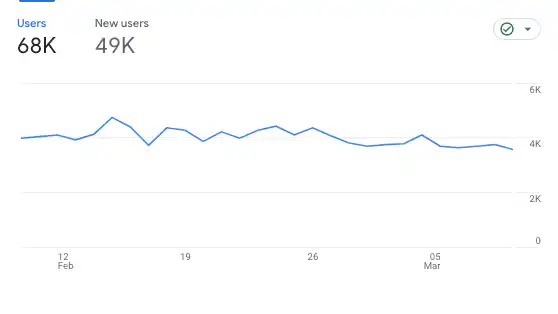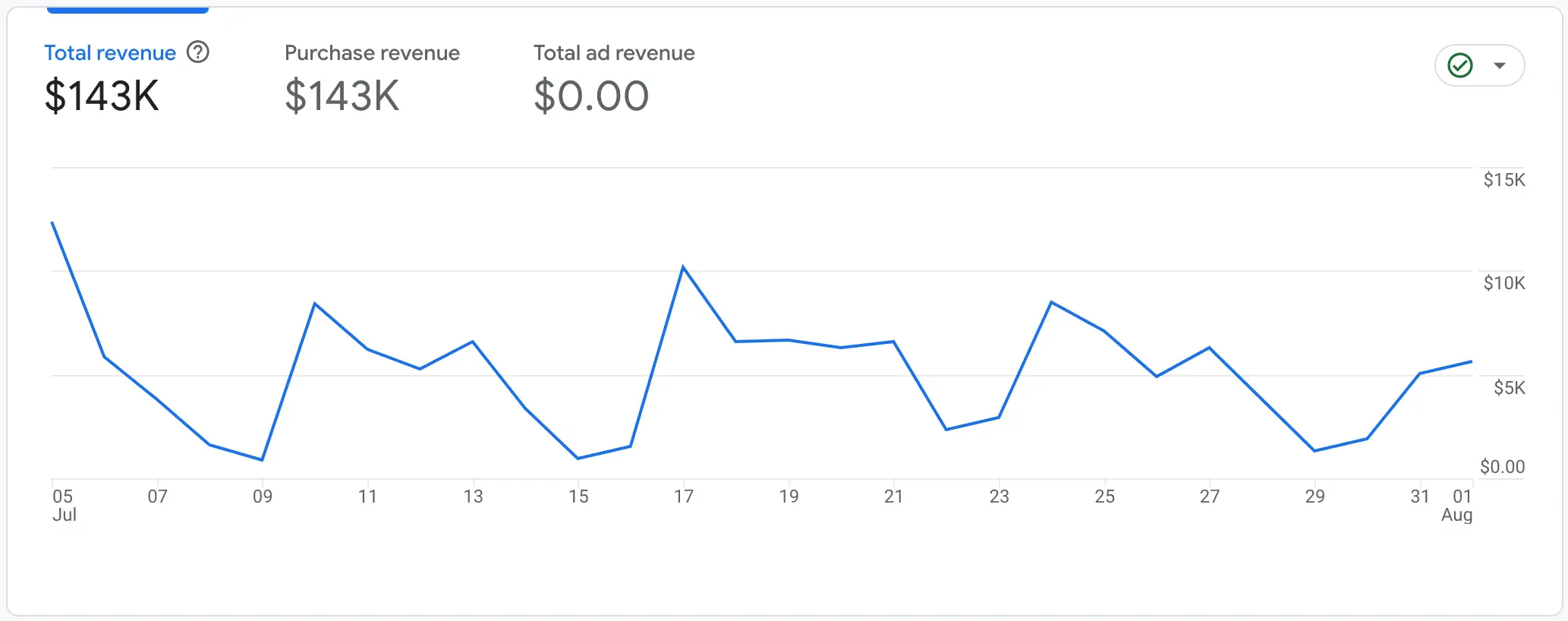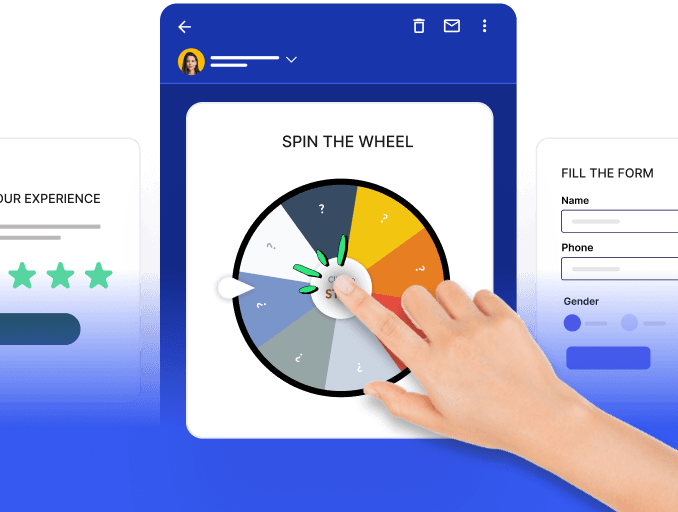Google Analytics is a comprehensive analytics platform that caters to websites and apps. It provides valuable insights that help enhance your understanding of your website visitors, their acquisition methods, their behavior, and profitability.
However, Google Analytics poses a significant learning curve for the average store owner. This may seem daunting, but familiarizing yourself with Google Analytics is a worthwhile investment.
This data helps attract new customers and prevents potential losses. Furthermore, the transition to Google Analytics 4 has enhanced the user-friendliness and precision of analytics. This guide covers the essentials of setting up Google Analytics and the fundamental reports ecommerce store owners need.
Table of contents
What is ecommerce tracking in GA4?
Ecommerce tracking in GA4 (Google Analytics 4) involves monitoring and analyzing user interactions and transactions within an online store. It provides valuable insights into customer behavior, purchase patterns, and the overall performance of an ecommerce website.
GA4's ecommerce tracking allows businesses to measure key metrics such as revenue, conversion rates, and product performance.
What can be tracked in GA4?
The online shopping activities that can be measured through GA4:
Product views: Monitor the number of times users view specific products on your website.
Add to cart events: Track when users add items to their online shopping carts.
Initiate checkout: Track instances when users initiate the checkout process on your site.
Purchase transactions: Record completed transactions to analyze the overall success of purchases.
Refund requests: Track instances where users request refunds for purchased items.
User engagement duration: Measure how long users engage with your online shopping content.
Promotion and coupon usage: Monitor the effectiveness of your campaigns by tracking the usage of promotions and coupons.
Product impressions: Monitor how often products appear in search results or category listings.
Product clicks: Track the frequency of clicks on specific products for deeper insights into user interest.
Product detail views: Measure the number of times users view detailed information about a particular product.
Where can you find ecommerce insights in GA4?
You’ll find ecommerce data in several places in your Google Analytics 4 interface. However, most pre-made reports can be found in the report section, where the entire lifecycle is represented in four separate sections - Acquisition, Engagement, Monetisation, and Retention.
The lifecycle in GA4 helps you understand how people use the website and app, from acquisition to retention.
Through GA4’s lifecycle, you can collect the following reports: Acquisition, Engagement, Monetization, and Retention.
1. Acquisition
User acquisition is the first step of the user journey on your website or app. This way, you can gain valuable insight into how users acquire and interact over time to optimize your future marketing strategy.

The acquisition overview report consists of the following summary cards by default.
- Users and new users: The users tab shows the total number of users who visited your website or app.
- The new users tab shows the number of users who visited the app or the website for the first time.
- Users in the last 30 minutes: This tab shows the real-time activity of the website.👇 The first half of the card shows the total number of users in the last 30 minutes. At the same time, the second half shows the real-time activity for the relevant dimension.
- New users by first user default channel group: It shows the number of users who have never visited your website or app categorized by GA4 as default channels. Default channel groups then sort the data with the most new users.
- Sessions by session default channel group: It shows the number of new sessions to your website or app categorized through channels considered to be default.
- Sessions by sessions google ads campaign: It shows the number of new sessions to your website or app categorized by Google ads campaign. The data is sorted by the campaigns that generated the most new sessions.

Lifetime value: It shows the average revenue of new users over their first 120 days on your website.
Traffic Acquisition gathers cross-channel traffic across dimensions with a special set of product-agnostic dimensions that help determine how you acquire users.
These multifaceted traffic source dimensions offer insights spanning organic and paid traffic from various channels, encompassing Google-paid sources, third-party paid sources, diverse buying platforms like Google Ads, Display & Video 360, Search Ads 360, as well as publisher or inventory sources such as Google Search and YouTube.
Also, you can collect traffic data by manually tagging your destination URLs by creating integrations between Analytics and your ad platforms. The dimensions in the report include the session campaign, session default channel grouping, session medium, source, and platform. At the same time, the metrics range from average engagement time. Conversions, engaged sessions, engagement rate, event count, events per session, sessions and total revenue.
2. Engagement
Post-acquiring users, you need to engage your audience to get their interest translated into action, such as signing up or purchasing the product.
The engagement report in GA4 summarizes the engagement data. This helps compare key engagement metrics over time while understanding the pages and screens people are visiting and identifying the areas they mostly interact with. The engagement report includes the following:

Average engagement time: This shows when your website was focused in a user’s browser or a mobile app. Using the formula, GA4 calculates the average engagement time automatically.
Engaged sessions per user: It shows the number of sessions that were engaged by the user.
Average engagement time per session: It shows the average time spent on your website or app. The average engagement time per session in the tab may be greater than the average in the chart. This is because the average engagement time per session in the tab shows the sum of engaged sessions per session divided by the number of sessions in the entire time period.
User Stickiness: It measures the engagement of active users within a shorter timeframe against their engagement across a broader timeframe. Analyzing these ratios can provide insights into user retention trends, with higher ratios indicating stronger engagement and better user retention rates.
- Event report: The reports under events show how often the event is triggered and how many users trigger each event on your website or app. By analyzing the events that users trigger on the website or app, you can improve the user experience, increasing conversions.
The events that are shown in the report include:
Automatically collected events: They are triggered by basic interactions with your website/app indicated under the event name. You can find the events that are automatically triggered here.
Enhanced measurements: It lets you measure interactions with your content by enabling options namely events. Enabling options helps GA4 send events right away.
You can track the parameters measured for the events in the table here.
Recommended events: They let you measure additional features and behavior. Since these events require additional context to be relevant, they can’t happen automatically. You must send the recommended events with the prescribed parameters in the respective properties list.
Custom events: They let you collect any additional information that GA4 doesn’t collect automatically. There are several ways to implement a custom event, which vary based on how your website or app measurement is configured-using gtag.js (for websites), utilizing Tag Manager (for websites), employing Google Analytics for Firebase (for mobile apps). You can mark any custom event as a conversion.
Conversion report: It shows how often users triggered each conversion event and how many users triggered each. A conversion event is when you mark it as a conversion because the event measures an action that’s important for the success of your business.
The dimensions in the report include event names and are automatically populated, while the metrics include conversion, total revenue, and total users.
Pages and screens report: It showcases data on the pages users visited on your website and screens that users opened on mobile devices, thereby enabling where people go across your websites and apps. Content group, hostname, page path and screen class, page title with screen class, and screen name are all dimensions in this report.
Landing page report: It helps people understand how visitors interact with your website. The report displays the initial page visitors land on when entering your website and visitor counts for each page. This data aids in recognizing high-performing pages and areas that require enhancements, providing insights into website performance. You can apply filters to the report to view your required report. The dimensions include landing page and the metrics that can be measured are average engagement time per session, active users, conversions,new users, and total revenue.
3. Monetization
Post setting up ecommerce tracking in GA4, it’s time to access various reports that are that’s housed under Monetization. The summary cards showcase your total revenue and purchase revenue, among others.

Ecommerce purchase report: It provides data on the products you sell on the website/store.
In-app purchase report: It provides data about the products you sell through the mobile app.
Publisher ads report: It shows you shows you each advertisement you include in your app. This is in addition to the engagement and revenue associated with each advertisement.
Promotions report: It shows the impact of each promotion on purchases and revenue.
User purchase journey report: It shows how many users drop off between each step in your purchase funnel.
Order coupon report: It shows the revenue associated with each coupon on your website or app.
4. Retention
Retention metrics within the ecommerce funnel provide insights into user behavior beyond initial conversions. The retention overview report summarizes how well your website or app retains users, which includes the average amount of time users spend engaged on your site or app after they were first acquired and the percentage of users who return each day in their first 42 days.
The premade summary cards in the retention overview report include data on:
- User retention by cohort: It shows how well your site or app retains users by cohort.
- User engagement by cohort: It shows the average amount of time users spend engaged on your site or app after they were first acquired.
- User retention: It shows the percentage of users who return each day in their first 42 days
- User engagement: It shows the average engagement time of users who return in their first 42 days
- Lifetime value: It shows the average revenue generated by new users over their first 120 days. This helps determine the valuable users based on the additional revenue they generate.
How to analyze your ecommerce conversion funnel?
ECommerce stores rise in popularity by comprehending customer behaviors and preferences. GA4 provides custom eCommerce reports designed explicitly for your business, ensuring meticulous tracking of every click, purchase, and interaction without oversight.
Having delved into the reports offered by the GA4, we gained the following insights:
Product Performance Overview: It helps fetch a comprehensive view of how individual products perform on your ecommerce store. From the insights available to ecommerce purchase reports, you can tailor your marketing and inventory strategies accordingly by understanding which products are top sellers and which are lagging.
Monetization Trends Analysis: It lets you use insights from monetization reports that’s important to understand the transaction trends.This provides total revenue, AoV, and purchase quality among others.
Conversion Tracking Importance: It is the most valuable action for any e-commerce store because it’s the action from customers you wait for. Tracking conversions lets you analyze channels, campaigns, or pages that drive the most valuable actions on the website.
Ad Campaign Effectiveness: It provides valuable insight into the effectiveness of your PPC search campaigns, display ads, or retargeting campaigns.
Campaign Performance Monitoring: It proves to be invaluable as they allow you to run and track multiple campaigns across different platforms.
Ad Destination Insights: It helps you understand which landing pages effectively convert ad traffic.
User Journey Understanding: It is important to know the specific reasons and motivations behind a user’s journey to your website. Determining which keywords they used to get there gives you a good idea to craft your content strategy for your store.
Takeaways
Google Analytics is a robust analytics platform that empowers website and app owners with crucial insights into audience behavior, acquisition methods, user interactions, and profitability.
However, it poses a significant learning curve for store owners, potentially discouraging them from leveraging its benefits. But the benefits far outweigh the initial challenges, making it an indispensable investment for ecommerce success.
What you should do next
Hey there, thanks for reading till the end. Here are 3 ways we can help you grow your business:
Talk to an email expert. Need someone to take your email marketing to the next level? Mailmodo’s experts are here for you. Schedule a 30-minute email consultation. Don’t worry, it’s on the house. Book a meet here.
Send emails that bring higher conversions. Mailmodo is an ESP that helps you to create and send app-like interactive emails with forms, carts, calendars, games, and other widgets for higher conversions. Get started for free.
Check out our AI prompts library. If you need AI prompts for ChatGPT or Bing, here's a ready-made database we’ve built to help marketers succeed at prompt engineering. Get your AI prompts here.
Get smarter with our email resources. Explore all our knowledge base here and learn about email marketing, marketing strategies, best practices, growth hacks, case studies, templates, and more. Access guides here.







